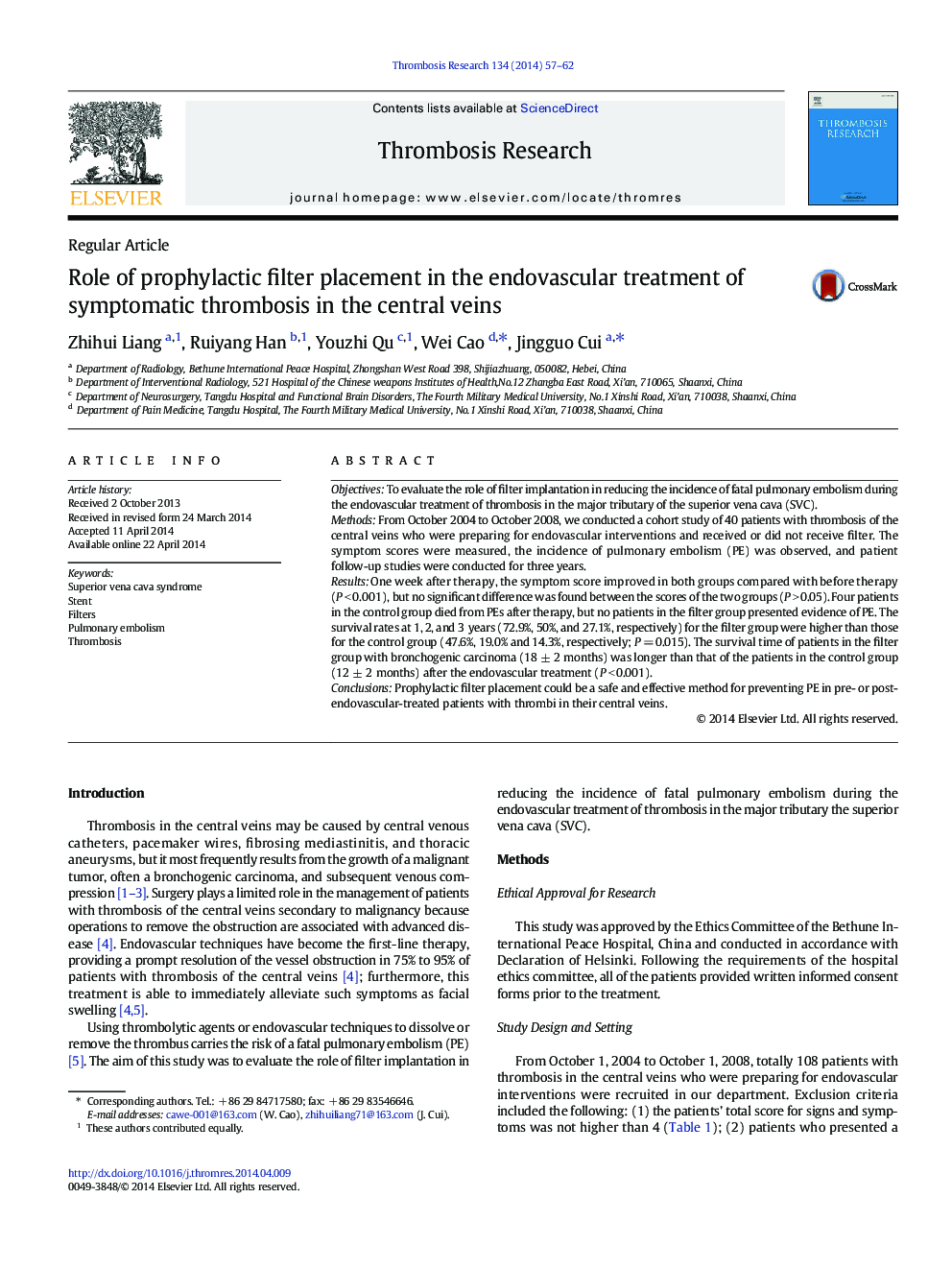| Article ID | Journal | Published Year | Pages | File Type |
|---|---|---|---|---|
| 6000832 | Thrombosis Research | 2014 | 6 Pages |
ObjectivesTo evaluate the role of filter implantation in reducing the incidence of fatal pulmonary embolism during the endovascular treatment of thrombosis in the major tributary of the superior vena cava (SVC).MethodsFrom October 2004 to October 2008, we conducted a cohort study of 40 patients with thrombosis of the central veins who were preparing for endovascular interventions and received or did not receive filter. The symptom scores were measured, the incidence of pulmonary embolism (PE) was observed, and patient follow-up studies were conducted for three years.ResultsOne week after therapy, the symptom score improved in both groups compared with before therapy (P < 0.001), but no significant difference was found between the scores of the two groups (P > 0.05). Four patients in the control group died from PEs after therapy, but no patients in the filter group presented evidence of PE. The survival rates at 1, 2, and 3 years (72.9%, 50%, and 27.1%, respectively) for the filter group were higher than those for the control group (47.6%, 19.0% and 14.3%, respectively; P = 0.015). The survival time of patients in the filter group with bronchogenic carcinoma (18 ± 2 months) was longer than that of the patients in the control group (12 ± 2 months) after the endovascular treatment (P < 0.001).ConclusionsProphylactic filter placement could be a safe and effective method for preventing PE in pre- or post-endovascular-treated patients with thrombi in their central veins.
